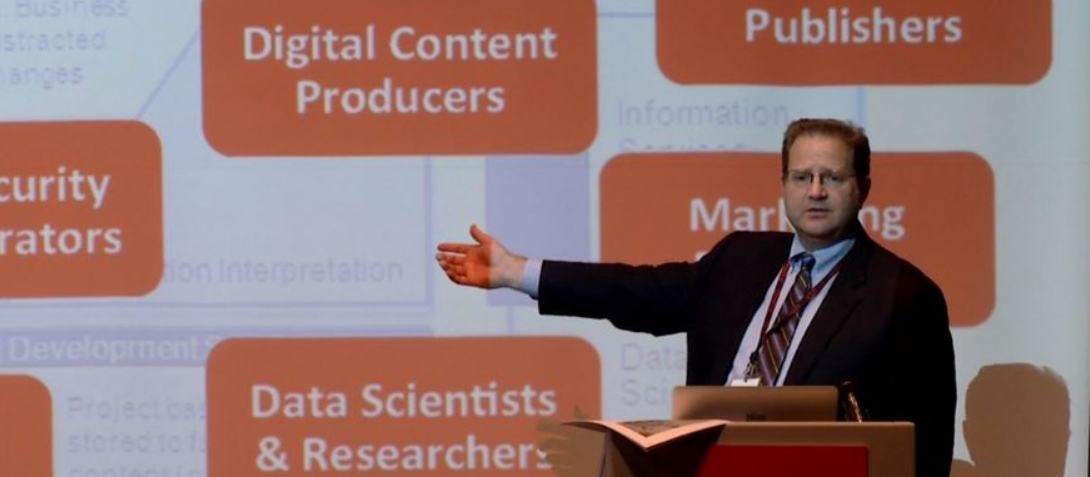Quite a mouthful, the title of this post. However, this language is becoming more and more critical to the objective of cross-domain information-sharing, and is becoming more and more easy to actually use (by the public!) in building information search, discovery, fusion and correlation/analytical applications.
A while ago, I was introduced to the semantic wiki technologies and communities of Knoodl (knoodl.com), which is a mechanism for like-minded persons to collaborate on building semantic vocabularies, using open standards like RDF and OWL. Basically describing the terms and language of a topic area in a manner that can be expressed, via XML, for consumption by computer applications. So when a message arrives in your system with information labeled "SAR", or a query is sent forth with the same acronym, a test of this word against the machine-readable vocabulary can determine what the likely meaning really is - "suspicious activity report", "suspect action report", "search and rescue", "specific absorption rate", etc.
Knoodl (by Revelytix, Inc) truly enables bottom-up "crowd-sourcing" of vocabularies within specific domains, from agriculture to military and homeland security - and it's now available as a free, cloud-sourced (Amazon's EC2) application with hooks for automated applications to use. What's most helpful, is that this vocabulary-building environment allows business, mission and technologists to create great machine-readable ontologies/knowledgebases, without having to actually use programming languages or edit XML. The vocabularies created or uploaded are immediately accessible through a query standard called "SPARQL", with full support for Knoodl's role-based permission model.
More barriers are now pretty much gone for forward-thinking agencies to collaboratively describe their data and information, expose (the vocabulary) it in a manner that enables accurate representation and description within a domain context, and leverage a "Web 2.0" semantic technology platform for free in conjunction with the rapidly-growing number of data query and mashup technologies already under way (like data.gov). Some very forward-thinking technology vendors are already leveraging this technology into their "Operational Intelligence" cloud-based platforms, such as Vitria's M3O Web 2.0 BPM suite...and we all understand that business entity definition and business process identification/management is at the heart of most successful SOA implementations.
A while ago, I was introduced to the semantic wiki technologies and communities of Knoodl (knoodl.com), which is a mechanism for like-minded persons to collaborate on building semantic vocabularies, using open standards like RDF and OWL. Basically describing the terms and language of a topic area in a manner that can be expressed, via XML, for consumption by computer applications. So when a message arrives in your system with information labeled "SAR", or a query is sent forth with the same acronym, a test of this word against the machine-readable vocabulary can determine what the likely meaning really is - "suspicious activity report", "suspect action report", "search and rescue", "specific absorption rate", etc.
Knoodl (by Revelytix, Inc) truly enables bottom-up "crowd-sourcing" of vocabularies within specific domains, from agriculture to military and homeland security - and it's now available as a free, cloud-sourced (Amazon's EC2) application with hooks for automated applications to use. What's most helpful, is that this vocabulary-building environment allows business, mission and technologists to create great machine-readable ontologies/knowledgebases, without having to actually use programming languages or edit XML. The vocabularies created or uploaded are immediately accessible through a query standard called "SPARQL", with full support for Knoodl's role-based permission model.
More barriers are now pretty much gone for forward-thinking agencies to collaboratively describe their data and information, expose (the vocabulary) it in a manner that enables accurate representation and description within a domain context, and leverage a "Web 2.0" semantic technology platform for free in conjunction with the rapidly-growing number of data query and mashup technologies already under way (like data.gov). Some very forward-thinking technology vendors are already leveraging this technology into their "Operational Intelligence" cloud-based platforms, such as Vitria's M3O Web 2.0 BPM suite...and we all understand that business entity definition and business process identification/management is at the heart of most successful SOA implementations.

Comments